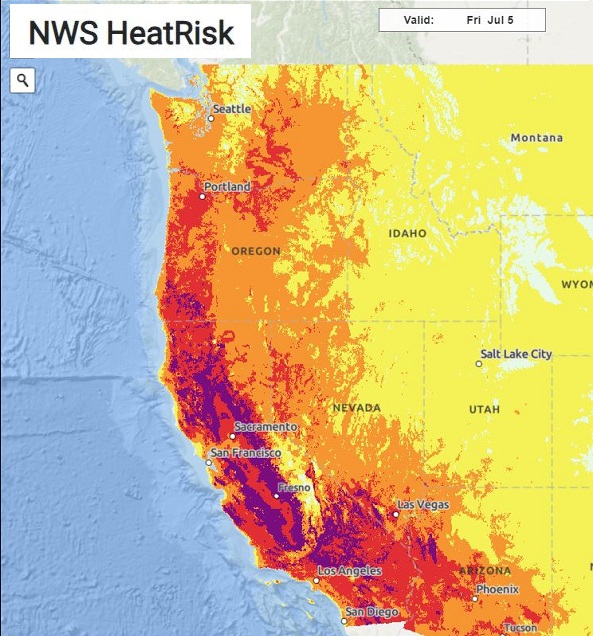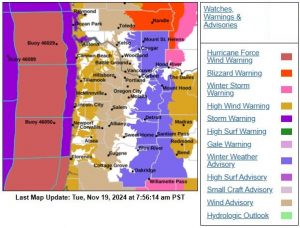Oregon activates Emergency Coordination Center to prepare for heat wave
3 min read
from the Office of the Governor, State of Oregon
State agencies are mobilizing resources and standing up the state Emergency Coordination Center throughout the heat wave.
In advance of excessive heat warnings for most of the state this holiday week from noon Thursday through Sunday evening, Gov. Tina Kotek is reminding Oregonians to take extra precautions to stay safe.
“Oregon will experience record-breaking heat across the state this holiday week,” Gov. Kotek said. “While extreme heat can be deadly for anyone, certain groups – children, elders, people with disabilities, and people who work outside – face additional risk. Also, remember to check on your neighbors, especially those who might not have access to air conditioning.
“High heat can also be a catalyst for wildfires. I strongly urge all Oregonians to practice extreme caution this weekend, stay cool, and take preventive measures to reduce the risk of human-caused wildfires.”
Temperatures across Oregon are expected to reach record-breaking levels, with the Portland metro area, Willamette Valley, and parts of Southern Oregon expected to hit temperatures in the triple digits. The heat risk levels and what they mean for individuals can be found on the National Weather Service’s Heat Risk map.
The Oregon Department of Emergency Management has activated the state Emergency Coordination Center in response to the heatwave. Multiple partners including the Oregon Health Authority, the Oregon Department of Human Services office of Resilience and Emergency Management, the Oregon State Medical Examiner, the Oregon Public Utility Commission and the American Red Cross are working with local and tribal emergency managers as they prepare to open cooling centers.
State agencies are providing support and resources where requested. The state Emergency Coordination Center will meet throughout the heatwave to monitor the situation and respond accordingly.
The Oregon Health Authority is also encouraging people to take steps to avoid heat-related illnesses such as heat stroke and heat exhaustion as advisories predicting triple-digit temperatures go into effect this week. Oregonians can find more information about local cooling centers from 211.
Sign up for OR-alert and get lifesaving alerts and instructions during emergencies to help you and others stay safe in Oregon.
Image: The NWS HeatRisk map for July 5, 2024 is an experimental color-numeric-based index that provides a forecast risk of heat-related impacts to occur over a 24-hour period.
HeatRisk takes into consideration how unusual the heat is for the time of the year; the duration of the heat including both daytime and nighttime temperatures; and whether those temperatures pose an elevated risk of heat-related impacts based on data from the CDC.
Green: Little to no risk from expected heat. Yellow: Minor – This level of heat affects primarily those individuals extremely sensitive to heat, especially when outdoors without effective cooling and/or adequate hydration. Orange: Moderate – This level of heat affects most individuals sensitive to heat, especially those without effective cooling and/or adequate hydration. Impacts possible in some health systems and in heat-sensitive industries. Red: Major – This level of heat affects anyone without effective cooling and/or adequate hydration. Impacts likely in some health systems, heat-sensitive industries and infrastructure. Magenta: Extreme – This level of rare and/or long-duration extreme heat with little to no overnight relief affects anyone without effective cooling and/or adequate hydration. Impacts likely in most health systems, heat-sensitive industries and infrastructure.






